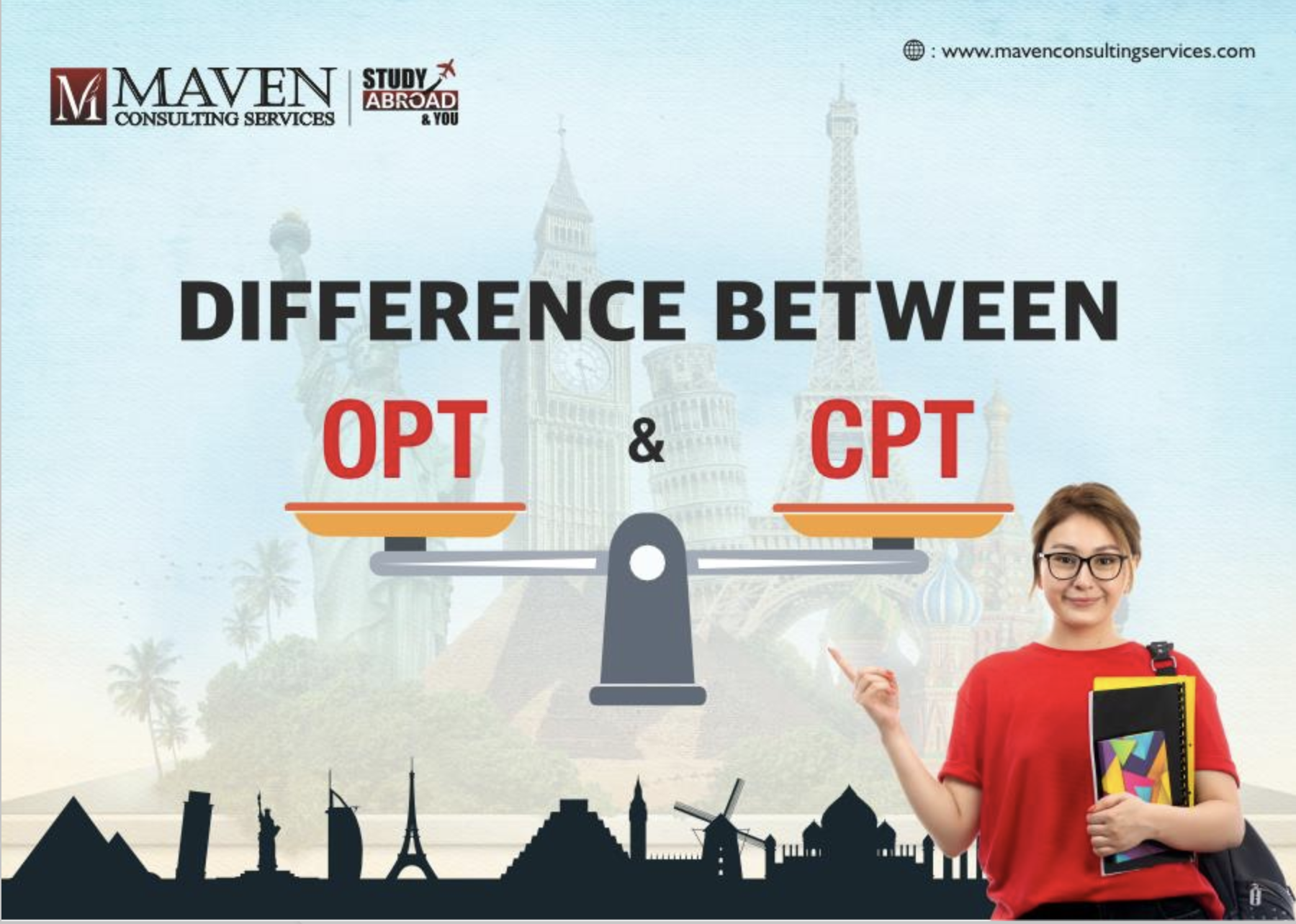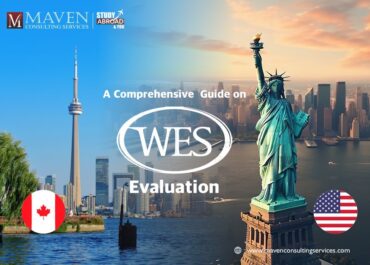Difference Between OPT And CPT

There are several ways for international students to work in the USA and gain valuable professional experience. These experiences can be either in the form of internships or full-time jobs.
These job opportunities help students apply what they learned in their college degree to real organizational work and gain experience in different fields and industries.
Multiple programs help students allow to work in the USA. These programs enable overseas students to work off-campus after completing their first academic year.
Two such programs are Optional Practical Training (OPT) and Curricular Practical Training (CPT).
Students often get confused between these two programs as they are very similar.
If you are also an international student looking for a way to work in the USA and often get confused in OPT and CPT, then worry not because, in this blog, we will help you understand everything you need to know about these programs.

Optional Practical Training (OPT):
OPT is a temporary program that allows students with an F-1 visa (a type of visa for international students to enter the USA) to work for a year in a field related to their majors. Students with an F-1 visa become eligible for OPT after they complete their first academic year.
Students can complete OPT before (pre-completion OPT) or after (Post-completion OPT) their graduation, but it is essential to remember that it only allows them to work for 12 months. If a student uses six months of OPT during graduation, then they are left with only six months of OPT after graduation.
Students with F-1 visas who have completed degrees in the specific fields of STEM are eligible for a 24-month extension for post-graduation completion of OPT employment. To qualify for a 24-month extension OPT, you must fulfill the following requirements:
- Presently working in the post-completion OPT period.
- Acquired an undergraduate, post-graduate, or doctoral level STEM degree from a Student and Exchange Visitor Program (SEVP)- certified school.
- Willing to work or presently working with an employer who uses the E-verify program.
- The student and the employer have signed Form- I-983, “Training Plan for STEM OPT Students.”
Curricular Practical Training (CPT):
CPT is also a temporary program that allows students with an F-1 visa to gain professional experience in their majors through employment, paid or unpaid internships, or co-operative (co-op) education.
In CPT, the training is directly related to the student’s major field and is an essential part of the school’s curriculum. Some majors require immediate CPT; in some cases, to be eligible for the CPT program, students with F-1 visas must complete one study year at a SEVP-certified school.
It is a must for students to complete CPT during their graduation. It can be part-time with 20 hours or less per week or full-time with 20 hours or less per week. If some student works full-time for 12 months CPT, they will lose eligibility for OPT. But working part-time or less than 12 months full-time in CPT will not affect their eligibility for OPT.

Key Differences between OPT and CPT:
The most crucial difference between these two programs is the duration of eligibility and the type of work students can do in each program. OPT can be completed during or after graduation, while students must complete CPT during graduation.
OPT helps students gain practical experience after graduation, while CPT helps students gain practical experience during graduation. CPT is part of students’ primary curriculum that allows them to work in paid or unpaid internships, apprenticeships, or co-op education programs.
Usually, CPT is a must requirement in most majors, but if it is not, students must receive course credit. On the other hand, OPT is not related to any degree requirement.
Students need permission from ISS and the academic department before applying for CPT, while OPT students need approval from USCIS (US government).
Only a few employers participate in CPT. Whereas OPT is not employer specific, it allows full-time work rather than internships or co-op programs, and students do not require course credit.
Students must pay an application fee for OPT, while students can apply for CPT for free.
After receiving approval for OPT, students receive an EAD from USCIS, while during CPT, students are not granted an EAD from USCIS.
Students can apply for CPT online, while they need to submit an on-paper application for OPT.
Students who opt for CPT can work with any employer in the USA, while students who opt for OPT can only work with employers featured on the I-20 list.
OPT can be extended for 24 months for STEM graduates, whereas CPT can not.
Can students apply for OPT and CPT:
If some students wish to apply for both OPT and CPT, they can; however, they must keep in mind that if they work for 12 months full-time in CPT, they will not qualify for OPT. Working part-time CPT will not affect their chances of being eligible for OPT, even if they work for 12 or more months.
To learn more about OPT and CPT, attend information sessions held on campus for international students.

Key Questions to Ask Your International Student Adviser
Students should consult their International Student office on campus to understand the requirements and eligibility for both programs. Some questions that you should reflect on and ask your international student adviser are:
- Does my degree require me to participate in an internship program to graduate?
- What are the school policies and requirements for international students to apply for internships, OPT and CPT?
- What paperwork do I need to submit if I want to apply for any of the two programs?
- What are the deadlines?
Conclusion:
There is a significant difference between OPT and CPT, but most importantly, the students must know when they are eligible for each program. Although you are allowed to use your OPT during graduation, it is advisable not to do so. Using your OPT after graduation gives you a better opportunity to apply for an H1B visa to extend your stay in the USA.









